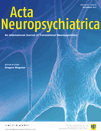Clinical models of stress
Abstract
Background: Here we propose a stress model with disease-specific aspects and aspecific factors. The latter are subdivided into load (perception, psychic defence mechanisms), strain (psychophysiological responses) and stress sensu strictu (biological and behavioural compensation). Insufficiently compensated strain will result in being sick and precipitation of a specific disease according to one's predisposition. In the clinical practice, multiconditionality requires a multidimensional analysis, the the five-axial DSM-system being designed especially for this purpose. Multidisciplinary treatment is then organized accordingly, i.e. Axis I: case management, medication; Axis II, (focal) psychotherapy; Axis III, somatic specialists; Axis IV, social worker; Axis V, psychotherapy for coping deficits.
Objective: To test the efficacy of this multimethodical approach.
Method: In a 1-year prospective study of 257 admissions in a department of psychiatry in a general hospital, the General Health Questionnaire (30 items) was filled out at admission, discharge and first polyclinical visit post-discharge.
Results: The 213 evaluable questionnaires at admission did not show differences (17–18.9) between the four groups, mood disorders (62%), alcoholism (17%), psychoses (15%) and anxiety disorders (6%). At discharge all four groups had reached the cut-off value for ‘not-sick’ (< 6), this remaining so at follow-up; the three measurements differed significantly throughout the patient groups. Hospitalization was definitely 28.2 days shorter than the Dutch mean of 42 days.
Conclusions: Working to the proposed clinical model for multiconditionalty is effective on intensity and duration of disorders, sustained improvement is attained.




